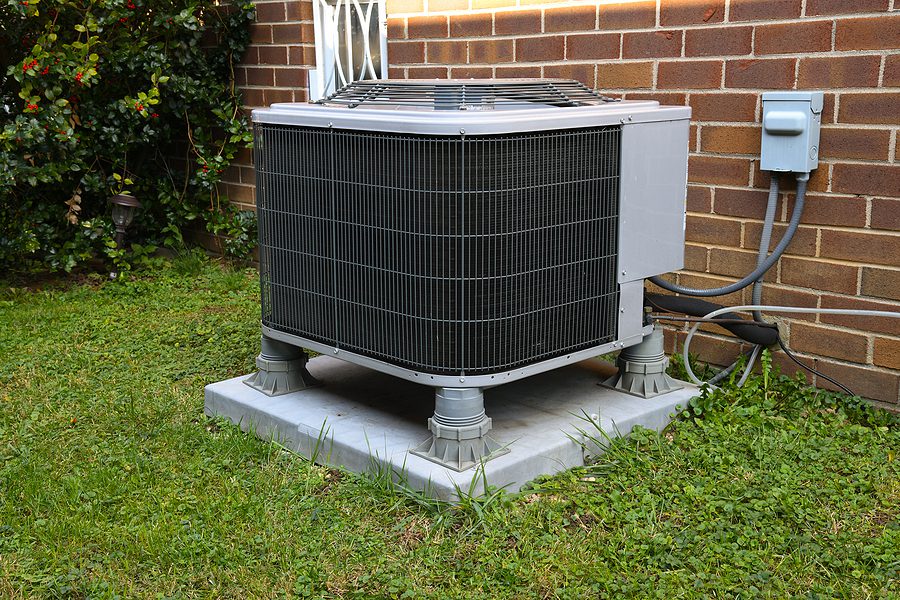
It’s the hottest day of the year. You get home, flushed and sweaty.
You can’t wait to bask in that refreshing AC coolness. But something’s wrong…the air coming through the vents is warm. Panic sets in. Is this the end? Will you have to suffer through scorching nights, tossing and turning?
Take a deep breath. More often than not, there’s a simple explanation for your AC woes. And in some cases, you might even be able to fix it yourself and avoid that dreaded repair bill.
We’re going to walk through the most common AC issues and what they mean. Armed with this knowledge, you can do some basic troubleshooting. You’ll know if it’s a quick DIY job or if you need to call in the pros.
Let’s get started!
Your AC Just Quit and the Thermostat is Blank
You go to check the thermostat and…nothing. A black screen stares back at you. Uh oh.
The likely culprit? A clogged condensate drain line. As your AC runs, it removes moisture from the air. That water has to go somewhere – usually through a PVC drain pipe outside. But over time, algae and gunk can clog that pipe.
When the drain gets blocked, the water backs up into the AC system. To prevent overflows and water damage, most units have a safety switch. When the drain pan fills up, that switch cuts power to the thermostat.
Here’s what to do:
- Locate your AC unit (the big metal box with fans). Look for a drain pipe coming out of it. That’s your condensate line.
- Use a wet/dry vacuum to suck out any water from the drain pan.
- Try running some compressed air through the drain line to blast out the clog.
- If that doesn’t work, you may need to disconnect the line and run a plumber’s snake through to clear it.
If you get the drain cleared, the safety switch should reset and your AC will fire back up. If not, it’s time to call a pro – there could be a bigger issue.
The Fan is Running But No Cold Air
You hear the familiar whirring of the fan and feel air blowing from the vents. But it’s warm air, not cold. What gives?
Chances are, you’re dealing with a bad capacitor in the outdoor condensing unit. Think of a capacitor like a little battery that gives your AC’s motors an extra jolt of power when they start up. When capacitors go bad, the motors can’t get running properly.
Specifically, a bad capacitor often prevents the compressor from kicking on. The compressor is what circulates the refrigerant through the system to remove heat. No working compressor = no cold air.
Replacing a capacitor is one of the easier DIY AC fixes. They’re cheap, around $10-25 for the part. Just make sure you:
- Disconnect all power to the unit first. Safety first!
- Discharge any lingering electrical charge from the old capacitor by shorting out the terminals.
- Snap in the new capacitor, reconnect the power, and your compressor should start right up.
If the new capacitor doesn’t get the compressor running, you may have a bigger electrical issue. Time to call a technician.
Your AC Can’t Keep Up – It’s Getting Hotter Inside
At first, your AC seems to be cooling just fine. But after running for a while, it starts losing steam. The house gets warmer and warmer no matter how low you crank that thermostat.
The likely problem? Low refrigerant levels. Refrigerant is the lifeblood of your AC system. It’s the stuff that actually removes heat from the air as it circulates through the coils. If levels get too low, your AC loses its cooling punch.
Running an AC system low on refrigerant can also seriously damage the compressor over time. So it’s important to get this issue addressed quickly.
Unfortunately, simply “topping off” the refrigerant is just a band-aid solution. Refrigerant doesn’t get “used up” – it circulates in a closed loop system. If levels are low, that means you’ve got a leak somewhere.
A professional AC tech will need to:
- Properly evacuate any remaining refrigerant from the system.
- Pressure test the entire system to locate the leak(s).
- Repair the leaks.
- Pull a proper vacuum to remove any air/moisture.
- Recharge the system with the precise amount of refrigerant.
Depending on the location and severity of the leak, repair costs can vary widely. But ignoring it will only lead to more expensive compressor damage down the road.
Burning Smell or Banging from the Ducts
Both point to a failing blower motor.
The blower is what circulates air through your duct system and into the rooms of your home. When that motor starts going out, you’ll get decreased airflow at best. At worst, you could have a fire hazard on your hands from overheating components.
Blower motors don’t just quit out of the blue, though. There are some warning signs:
- Squeaking or grinding noises as the bearings start degrading
- Excessive vibration or shaking from imbalance
- Intermittent operation as the motor struggles to turn over
If you catch it early enough, a technician may be able to get some more life out of the motor. Things like lubricating the bearings and replacing the run capacitor can help. But once the motor fully seizes or burns out, replacement is the only option.
Blower motors are costly repairs, $500-900 in most cases. The real headache is the labor involved – pulling out the entire blower assembly from the plenum or air handler. Not a fun job!
AC Quit and the Circuit Breaker Keeps Tripping
You go to reset the breaker that controls your AC unit…and as soon as you turn it back on, it trips again instantly. Uh oh, that’s not good.
When an electrical circuit shorts out or overloads, your breaker is designed to cut power to prevent damage and fire hazards. A breaker that keeps tripping points to a serious issue with one of the large motors in your AC system.
The two most likely culprits? A failed compressor motor or a stuck condenser fan motor.
The compressor is the heart of your AC’s refrigerant system. When that motor fails, it can cause a dead short in the electrical circuit. No amount of breaker resetting will get it going again.
Likewise, if the condenser fan motor seizes up, it will quickly overheat the circuitry and pop that breaker. You may even smell burning electrical insulation from the failed motor windings.
In either case, the only solution is to replace the faulty motor or the entire component it’s a part of. Compressors and condensers aren’t cheap – $1000-2000 for parts and labor is common for these repairs.
If the breaker keeps tripping with the AC off, you may have a separate electrical issue elsewhere in your system. Loose wiring, a short in the control board, or other problems can all cause tripped breakers. Definitely time to call in a pro!
That Whining, Buzzing Sound…Uh Oh
You’ve got an AC system that’s running, but it just doesn’t sound right. Maybe there’s a whining or buzzing noise coming from the outdoor condenser unit. What could it be?
Nine times out of ten, that whining or buzzing is the telltale sound of a struggling compressor. As the compressor ages and its internal components start wearing out, it has to work harder and harder to circulate refrigerant.
You see, the compressor relies on tight seals and precise pressure differentials to do its job. As those seals and valves start leaking, you get a loss of efficiency. The compressor motor strains under the added load, making all sorts of unpleasant noises.
A technician can sometimes replace internal valve plates or reed valves to buy an old compressor some more life. But more often than not, that whining sound means the whole compressor is on its way out.
Compressor replacements are one of the most expensive AC repairs out there. You’re looking at $1000-2000 for a typical replacement, including the part itself and labor. Ouch!
The good news? A new compressor can often get an aging system running like new again for years to come. Just be prepared foricker shock when you get that repair estimate.
When to Call a Pro (and When to DIY)
So, there you have it – the six most common AC issues and what they mean. Some, like a clogged drain line or bad capacitor, are relatively easy DIY fixes if you’re handy. Others like a blower motor or compressor failure require the skilled hand of a professional HVAC technician.
When in doubt, don’t risk making things worse by poking around in your AC system. An ounce of prevention is worth a pound of cure, as they say. Regular professional maintenance can help catch small issues before they become costly breakdowns.
But if you do run into AC trouble, hopefully this guide gives you a head start on troubleshooting. You’ll know whether it’s a simple DIY job or time to call in the pros. Just don’t suffer through sweltering summer nights – get that cool air flowing again!


